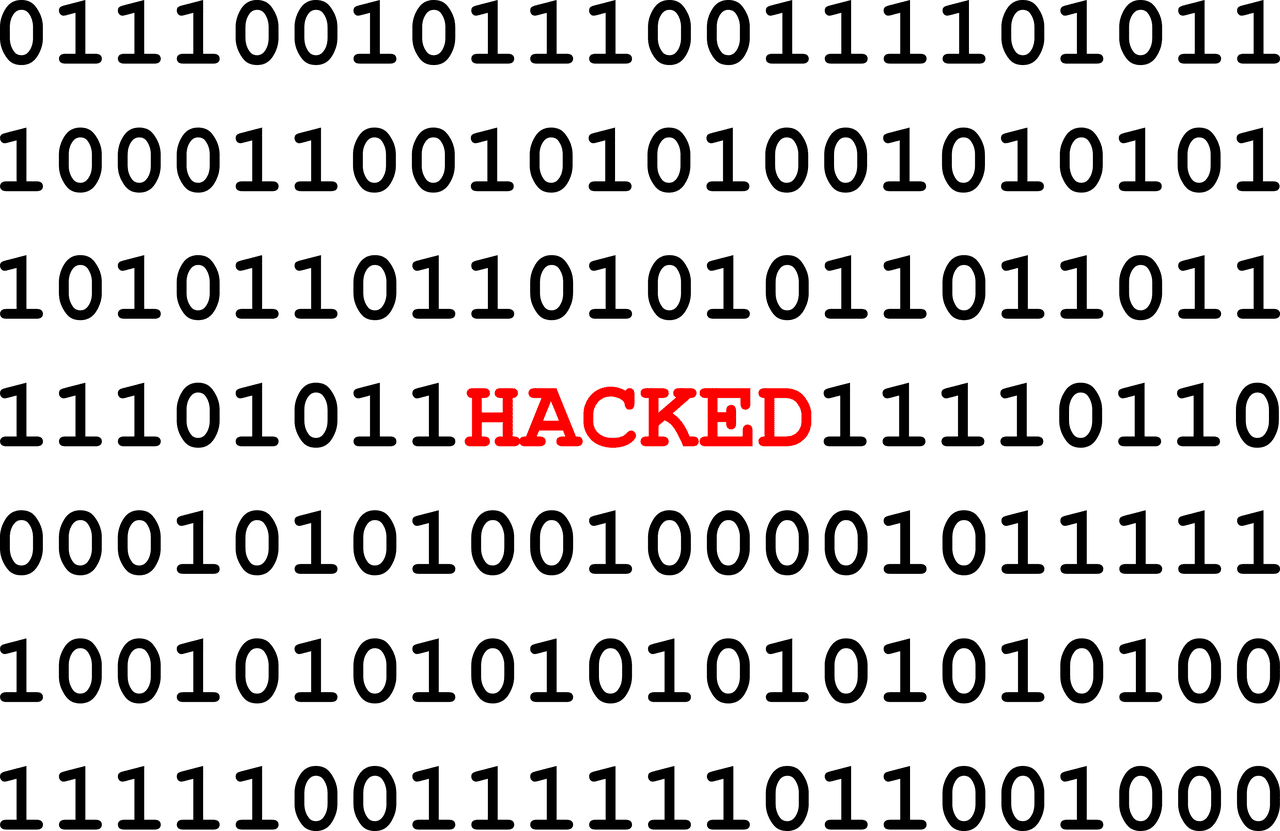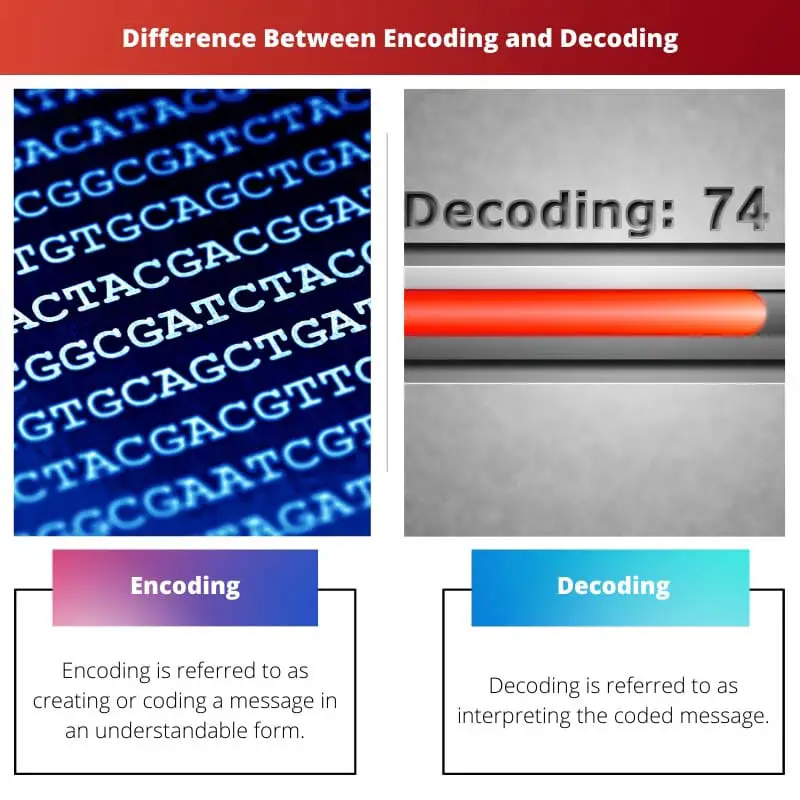Communication is the basis of interaction between all living beings. Whether it is humans, animals or birds, everyone communicates with their fellow beings through various mediums.
Key Takeaways
- Encoding converts a message into a coded format suitable for transmission or storage. At the same time, decoding converts the coded message back into its original form.
- Encoding is used to protect data during transmission or storage, while decoding is used to retrieve the original data.
- Common examples of encoding include encryption, Huffman coding, and Base64 encoding, while common examples include decryption, Huffman decoding, and Base64 decoding.
Encoding vs Decoding
The difference between Encoding and Decoding is that Encoding is referred to as the sender creating a message in a certain format to make it readable by the receiver, whereas, Decoding is referred to as the interpretation of the encoded message by the receiver. Both encoding and decoding can either be verbal or non-verbal based on the purpose of the conversation.

Encoding is the process in which a message is created or formed for communication. The sender is the encoder who creates the message.
On the other hand, Decoding is the process in which the encoded message is interpreted or understood to fulfil the purpose of communication.
Comparison Table
| Parameters of Comparison | Encoding | Decoding |
|---|---|---|
| Definition | Encoding is referred to as creating or coding a message in an understandable form. | Decoding is referred to as interpreting the coded message. |
| Input | The applied signal or message is the input. | Coded binary data is the input. |
| Output | The generated data in the coded form is the output. | The message in understandable form is the output. |
| Usage | It is utilized in Emails, videos etc. | It is utilized in microprocessors, memory cards etc. |
| Installation | The encoder (sender or any software) used is installed at the transmitting end. | The decoder or receiver is there at the receiving end. |
| Complexity | It is a simpler process. | It is complex as it involves the interpretation of the codes. |
What is Encoding?
Encoding is defined as the creation and conversion of a message or information into coded form. Coding is a program that facilitates a particular piece of information to be in a format issued by certain protocols.
Coding and system are interrelated with one another. Encoding is shaped or structured by the encoder, which creates and puts the message in such a way that it is understandable by the reader or receiver.
Without the encoder or source, communication will not be possible. Therefore, the encoder is an important element in a conversation. However, having an encoder is not enough.
Encoding can be verbal or non-verbal, depending on the requirement of the conversation. It is used in emails, videos or images etc.

What is Decoding?
Decoding is defined as the understanding and interpretation of the message formed by the encoder.
This process is carried out by a decoder, i.e. either a person or any system that converts the coded message into a simpler form and interprets it.
Decoding becomes successful when the receiver understands the message easily. As a result of this, the receiver is able to convey a reply or another message to the sender.
When the message reaches the receiver, it should be in a clear, appropriate and meaningful format so that there is no misconception about the intention and purpose of the message.
Decoding is either verbal or non-verbal, depending on the type of message the encoder sends. It is mostly used in microprocessors and memory cards.

Main Differences Between Encoding and Decoding
- Encoding is utilized in emails, videos etc. and decoding is utilized in microprocessors, memory cards etc.
- The encoder works at the transmitting end, while the decoder works at the receiving end of the communication.

- https://www.sciencedirect.com/science/article/pii/S0959438818301004
- https://psycnet.apa.org/record/1976-07180-001

The delineation of encoding and decoding processes assists in establishing a deeper understanding of communication dynamics.
The explanation of encoding and decoding is enlightening, emphasizing the necessity of effective two-way communication.
An interesting observation about the interconnected nature of all living beings and their means of communication. The role of the encoder and decoder seems pivotal in the dynamics of this process.
The comparison and contrast between encoding and decoding are well-articulated. The examples of usage clear any ambiguities pertaining to both processes.
Absolutely! The encoding and decoding process seems to facilitate seamless communication across various mediums and channels.
A comprehensive comparison between encoding and decoding. The clarity of the explanation makes it easier to comprehend the significance of both concepts.
Indeed, decoding is as crucial as the encoding in ensuring a smooth transmission of information.
An insightful portrayal of the essence and functions of encoding and decoding. The detailed information enriches the understanding of communication processes.
The elaborative details about encoding and decoding processes offer a comprehensive view of their significance in communication.
The content effectively accentuates the roles and impact of encoding and decoding in communication dynamics.
The characteristics and intricacies of encoding and decoding are well-detailed. It expands the perspective about the aspects of communication.
This breakdown of the encoding and decoding processes provides valuable insights into the mechanisms of communication.
The explanations of encoding and decoding, along with their applications, provide a deeper understanding of their roles in information exchange.
The interpretation and understanding of encoding and decoding processes hold significant importance in effective communication.
The relevance and implications of encoding and decoding are well portrayed, emphasizing their necessity in ensuring coherent communication.
The detailed explanations of encoding and decoding shed light on their functionalities and significance in the process of communication.
The discussion provides a clear view of how encoding and decoding are integral in ensuring effective communication.
Understanding the principles of encoding and decoding enriches our comprehension of communication dynamics.
The differentiation between encoding and decoding is very informative. It highlights the importance of both processes in enabling effective communication.
Indeed, understanding the roles of encoding and decoding can help in the efficient flow of information.
The comparison table and the detailed descriptions effectively convey the essence of encoding and decoding methods. This helps in understanding the roles of sender and receiver in communication.
The table indeed brings clarity, offering a comprehensive overview of the key differences between encoding and decoding.
The complexity and significance of encoding and decoding processes are well elaborated, enhancing the understanding of their vital roles.
The distinctions and details about encoding and decoding processes offer valuable insights into the core dynamics of communication.
Indeed, grasping the nuances of encoding and decoding enhances our knowledge of information transmission and reception.